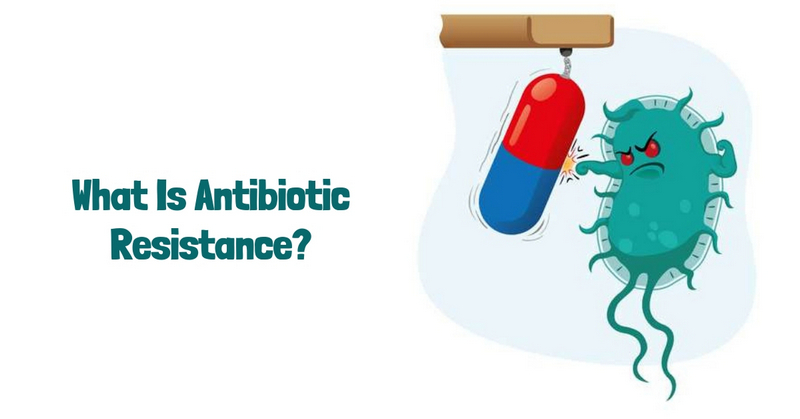
Antibiotic resistance is a phenomenon of resistance of the strain of infectious agents to the action of one or more antibacterial drugs, a decrease in sensitivity (resistance, immunity) of the microbial culture to the action of the antibacterial substance.
Antibiotics have long been a universal way of combating infections. Antibiotic-resistant superbugs are one of the main problems of modern medicine. The pathogens of gonorrhea, staphylococcus, pneumococcus mutated, and now it is not clear how to deal with them. According to forecasts, particularly persistent infections threaten millions of lives, so science has the task of developing more powerful means of control, as well as an alternative to antibiotics.
How does bacterial resistance occur?
Antibiotics act on the least resistant bacteria, but the mutated ones stick to the last. And if you do not fight them, they pass the gene of resistance during reproduction. In addition, bacteria exchange mutations. Such a supermicrobe produces enzymes that decompose the antibiotic. Its cell membrane, which had previously been dealt a crushing blow to drugs, is now invulnerable. Some superbugs can fool antibiotics by building around themselves a layer of proteins that mimic ribosomes – intracellular protein factories. The drug destroys them, but the real ribosomes continue to function, and the bacteria continues to live.
How can we stop antibiotic resistance?
Today, the struggle for a place under the sun is going in all possible directions. First of all, one should, if possible, limit and tightly control the use of antibiotics. According to statistics, one-third of the antibiotics prescribed by doctors are not needed by patients, that is, they should be used more carefully in the treatment. But, in addition, man invents, combines and searches for new enemies for the bacteria.
- Development of new antibiotics. Alas, this is one of the most promising methods of combating antibiotic resistance. Any drugs, no matter how strong they are, will be useless sooner or later. Therefore, new, previously unknown drugs appear less and less frequently. However, sometimes scientists can find something interesting. For example, recently they isolated a substance darwinolide from a marine Antarctic sponge, which destroys up to 98% of Staphylococcus aureus cells;
- Combined treatment methods. This is the most common treatment for patients with MDR infections. The right combination of already known drugs leaves no chance for bacteria to survive and therefore prevents the appearance of strains resistant to them. For example, in June 2016, pharmacists reported the creation of a new, combined drug, which effectively destroys methicillin-resistant Staphylococcus aureus. Another example is the combination of some penicillins with clavulanic acid. The latter contributes to the destruction of the cell wall, and after that antibiotics come into play;
- “My enemy’s enemy is my friend”. There is a search for “natural” methods of combating pathogenic microbes. For example, there are viruses that feed on bacteria, they are called bacteriophages. These microorganisms were discovered at the end of the XIX century. But, alas, they cannot be a panacea in this case. First of all, they are very narrowly specialized and are not interested in other bacteria, except for a particular strain. Secondly, microbes have learned to be resistant to them too. Last year, German researchers reported on Staphylococcus lugdunensis bacteria, which are able to produce an antibiotic that is dangerous for Staphylococcus aureus with MDR. It turned out that wonderful bacteria live in the human nasal cavity. They produce the substance lugdunin, which inhibits the growth of a dangerous microorganism.
How to prevent antibiotic resistance: rules of antibiotic therapy
We will point out the five basic rules for taking antibiotics: the right patient should receive the right medicine at the right time, in the right dose and the right way. What other rules should be followed when using these drugs?
- The most important rule is to complete the treatment and not reduce the dosages prescribed by the doctor. According to studies, every fourth mother does not bring a course of antibiotics prescribed to her child to the end;
- At the same time, it is also impossible to delay the use of these drugs for a longer period – this gives an additional chance to infection to find a way to combat the medication;
- Only the “golden mean” can effectively stop the infection. Narrow-spectrum antibiotics (those acting on a limited number of bacteria) are safer and more preferable than broad-spectrum drugs;
- The more accurate the impact, the less chance of survival of pathogenic bacteria. Before using antibiotics, a person should be tested for sensitivity to those drugs that will be prescribed;
- Special attention in the treatment of antibiotics in hospitals should be given the risk of contracting nosocomial infections. This means that sanitization and disinfection should be carried out at the maximum available level.
